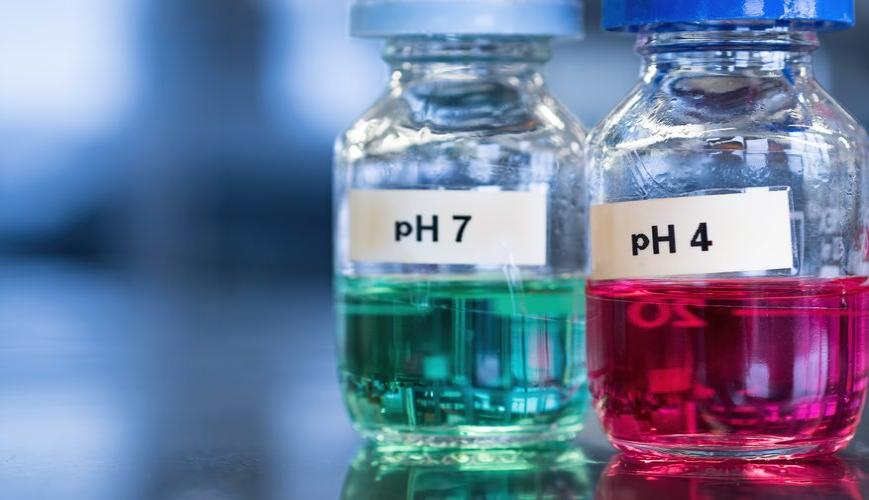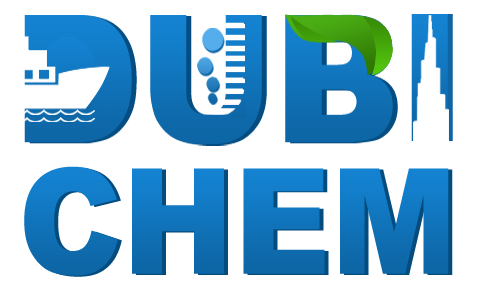
What is a Buffer Solution Is and How It Works?
Cradles regularly are disregarded and underestimated by research facility researchers until the point when the day comes when an odd ancient rarity is watched and its beginning is followed to an awful support. In spite of the fact that oversights in the sythesis of supports have driven at times revelations, for example, the right number of human chromosomes (Arduengo, 2010), utilizing the best possible cradle, effectively arranged, can be critical to achievement in the lab.
Most essentially, a cushion capacities to oppose changes in hydrogen particle focus because of interior and natural elements. In any case, scientists frequently consider supports doing significantly more: giving fundamental cofactors to enzymatically determined responses, basic salts, and even basic supplements for cells and tissues. In any case, when the fundamental capacity of a cushion framework, opposing changes in hydrogen particle focus, is neglected, test curios and different issues soon take after. Here we inspect the essential science of cradle frameworks and how that science applies to responses in trial organic frameworks.
Cushions comprise of a powerless corrosive (HA) and its conjugate base (A– ) or a frail base and its conjugate corrosive. Feeble acids and bases don't totally separate in water, and rather exist in arrangement as a harmony of separated and undissociated species. Think about acidic corrosive. In arrangement acetic acid derivation particles, hydrogen particles and undissociated acidic corrosive exist in harmony. This framework is equipped for retaining either H+ or OH– because of the reversible idea of the separation of acidic corrosive (HAc). HAc can discharge H+ to kill OH– and frame water. The conjugate base, A– , can respond with H+ particles added to the framework to create acidic corrosive. Along these lines, pH is kept up as the three species always acclimate to reestablish balance.
All cushions have an ideal pH extend over which they can direct changes in hydrogen particle focus. This range is a factor of the separation steady of the corrosive of the support (Ka) and is by and large characterized as the pKa (– logKa) esteem give or take one pH unit. pKa can be resolved utilizing the Henderson-Hasselbalch condition (Appendix A).
What Makes a "Decent" Buffer
In 1966, Norman Good and partners set out to characterize the best supports for biochemical frameworks (Good et al. 1966). Great put forward a few criteria for such supports:
• A pKa in the vicinity of 6 and 8. Most biochemical examinations have an ideal pH in the scope of 6– 8. The ideal buffering range for a cradle is the separation consistent of the feeble corrosive segment of the support (pKa) give or take pH unit.
• Solubility in water. Organic responses, generally, happen in watery conditions, and the cradle ought to be water-solvent consequently.
• Exclusion by natural films. This isn't critical for every single biochemical response. Nonetheless, if this is a critical model for your specific trial, it is useful to recollect that zwitterionic cushions (positive and negative charges on various iotas inside the particle) don't go through organic films. Cases of zwitterionic cradles incorporate MOPS and HEPES; Tris and phosphate supports don't isomerize into zwitterions.
• Minimal salt impacts. As it were, the cushion parts ought not connect or influence particles engaged with the biochemical responses being investigated.
• Minimal consequences for the separation from changes in temperature and focus. More often than not there is some adjustment in the separation with an adjustment in fixation. In the event that this change is little, stock arrangements for the most part can be weakened without changing the pH. Nonetheless, with a few cushions, changes in focus have more impact on separation, and stock arrangements can't be weakened without essentially influencing pH.
For example, the pH of Tris diminishes roughly 0.1 pH unit for each ten times weakening, and the pH could change drastically in the event that you weaken a working arrangement and are at the points of confinement of the ideal buffering scope of the Tris (ideal buffering range pH 7.3– 9.3 at 20°C). Note that Tris isn't one of Good's cradles.
Temperature changes can be an issue as well. Tris displays a substantial move in separation with an adjustment in temperature. For instance, in the event that you set up a Tris support at pH 7.0 at 4.0°C and play out a response in that same cradle at 37°C, the pH will drop to 5.95.
On the off chance that you have a Tris support arranged at 20°C with a pKa of 8.3, it would be a powerful cushion for some biochemical responses (pH 7.3– 9.3), yet the same Tris cradle utilized at 4°C turns into a poor cradle at pH 7.3 in light of the fact that its pKashifts to 8.8.
So the bring home message: Make the cradle at the temperature you intend to utilize it, and if your test includes a temperature move, select a support with a range that can suit any move in separation therefore.
• Minimal connections between cushion segments and basic response parts. In the event that a perplexing structures between the cushion and a required cofactor, say a metal cation like zinc or magnesium, your response additionally may be traded off. For instance calcium accelerates as calcium phosphate in phosphate supports. Not exclusively would any Ca2+-requiring responses be traded off, however the buffering limit of the phosphate support additionally is influenced.
Having extreme measures of a chelating specialist in the support for an enzymatically determined response could cause issues (e.g., a high grouping of EDTA in a PCR intensification). Citrate is a calcium chelator, so maintain a strategic distance from citrate cushions in circumstances where calcium focuses are basic.
Tris supports again give us issues in light of the fact that Tris contains a receptive amine gathering. In the event that you are attempting to make Tris cushion that is sans rnase, the amine bunch on the Tris particle will respond with diethylpyrocarbonate (DEPC), the synthetic commonly used to pretreat watery arrangements utilized for RNA work. In this way, don't DEPC-treat Tris-containing arrangements. HEPES is another cushion that responds with DEPC. (Keep in mind as well, that MOPS is a greatly improved cushion for most RNA work!)
Bring home message: Buffers are not idle. Be cautious which ones you picked.
• Chemical strength. The support ought to be steady and not separate under working conditions. It ought not oxidize or be influenced by the framework in which it is being utilized. Attempt to keep away from supports that contain members in responses (e.g., metabolites).
A few cushions, for example, MOPS, must be shielded from light, yet when they are put away appropriately they are still to a great degree helpful supports in biochemical responses and research center conventions like RNA electrophoresis.
• Light retention. The cushion ought not retain UV light at wavelengths that might be utilized for readouts in photometric tests.
• Ease of Use. The support segments ought to be anything but difficult to acquire and get ready.
Great et al. characterized a few attributes of cradles for biochemical responses. Regardless of what cradle you pick, you have to consider impacts of temperature and condition on the cushion and guarantee that the support is perfect with your framework.
Getting ready Buffers
As talked about already factors like temperature and focus can significantly impact the pKa, and accordingly, the pH extend over which a support framework is best. Cautious readiness of cushions is vital for effective and reproducible analyses.
Get ready Buffers at the Appropriate Temperature and Concentration.
Since changes in temperature can be related with a move in separation, set up your cradles at the temperature at which you will play out your analyses. On the off chance that your trial includes an adjustment in temperature, pick a support with a pKa that obliges it.
Changes in fixation likewise can be related with a move in separation, so on the off chance that you intend to keep up support stock arrangements, ensure that the pH alteration is made after you have weakened the stock to the coveted focus and equilibrated it at the fitting temperature. Or then again, in any event, check the pH after weakening.
Change the pH of the Buffer System Correctly.
Numerous cushion materials are provided as crystalline acids or bases (e.g., Tris base). At the point when these materials are broken up in water, the pH of the arrangement isn't close to the pKa, and the pH must be balanced utilizing the proper corrosive or base before the arrangement will turn into a reasonable support. In the event that the crystalline support material is a corrosive, at that point pH can be changed in accordance with the coveted pH with a base that won't include an undesirable counter particle. On the off chance that the material is a base, at that point, a suitable corrosive might be utilized. Note: Dissolve the crystalline corrosive or base in just 60– 70% of the last wanted volume to leave space for the volume of the corrosive or base you are utilizing to alter the pH. Water can be added to achieve the last wanted volume after the coveted pH is acquired.
Numerous cradles, be that as it may, are not made by dissolving a crystalline corrosive or base at that point altering the pH to convey the arrangement near the pKa. Rather the cradle framework is set up by blending two parts, for example, the free corrosive or base and the salt, in particular proportions to accomplish the coveted pH. For example, a 0.1M arrangement of HEPES and a 0.1M arrangement of HEPES, sodium salt, can be blended to give a progression of 0.1M HEPES supports in a scope of pH esteems from 6.55 to 8.55. Sodium citrate cradle arrangements can be made and acclimated to the coveted pH by blending citrus extract and trisodium citrate.
Different cradles are made by blending the cushion segment and its conjugate corrosive or base utilizing Henderson-Hasselbalch figurings. For example, phosphate cradles are made by blending monobasic and dibasic sodium phosphate arrangements in a particular proportion. Sodium bicarbonate cushion frameworks are made by blending arrangements of sodium carbonate and sodium bicarbonate.
Deal with and Use the pH Meter Correctly.
The utilization of pH meters appears to be relatively instinctive; in any case, pH meters must be kept up legitimately and terminals cleaned and filled, and pH adjustment cushions should be effectively arranged and free of sullying.
Dubichem chemicals international is a leading supplier, manufacturer and exporter of Buffer Solution in Dubai, Ajman, Abu- Dhabi, Sharjah, Fujairah, Turkey, Saudi Arabia, Qatar, Kuwait, United Arab Emirates, Oman, Singapore, Malaysia, Indonesia, Lebanon, Greece, India, Sudan, Ghana, Madagascar, Kenya, Nigeria, Zimbabwe, Uganda, Ethiopia, Namibia, Mauritius, South Africa ,Europe & Globally for any queries mail us at dubichem@gmail.com and for more related products visit www.dubichem.com
